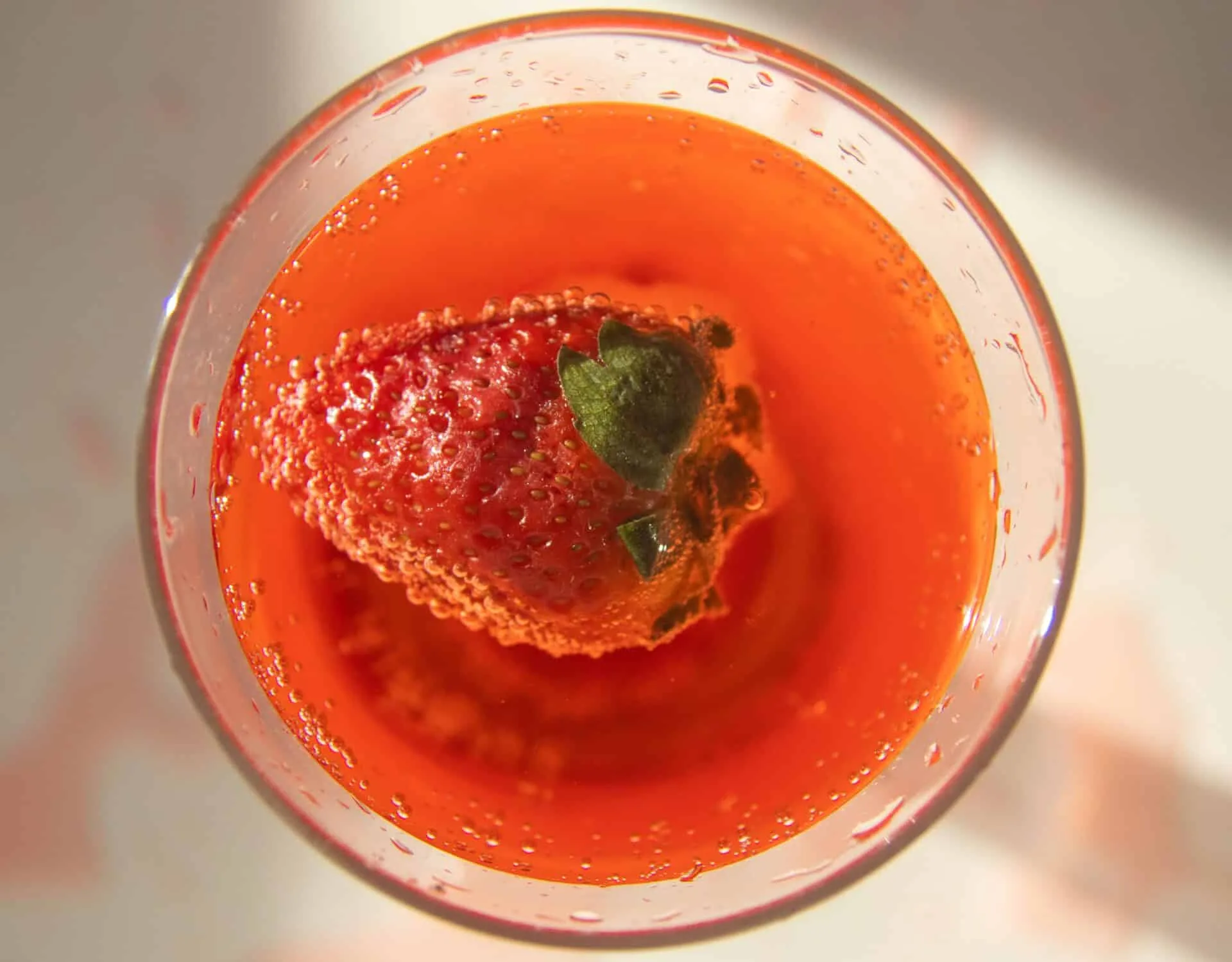Artificial strawberry flavoring is a food additive used to impart a strawberry flavor and aroma to many processed foods. It is made from a combination of both natural and synthetic ingredients, including flavors, colors, and preservatives. These ingredients are combined to create an artificial flavor that is as close as possible to the taste of real strawberries.Artificial Strawberry Flavoring is a type of synthetic flavoring that is created through the use of chemicals to imitate the taste and aroma of real strawberries. It is used to give food and beverages a strawberry flavor without using actual strawberries.
Ingredients to Make Artificial Strawberry Flavoring
The main ingredients used to make artificial strawberry flavoring are ethyl butyrate, isoamyl acetate, and amyl acetate. Ethyl butyrate is a colorless liquid that has a fruity aroma and is used to add a sweet, fruity flavor and aroma to foods. Isoamyl acetate is an ester that has a strong banana-like smell and it is used to give a sweet, fruity flavor and aroma to foods as well. Amyl acetate is also an ester that has an intense pear-like smell and it is often used in combination with the other two ingredients to create the artificial strawberry flavoring.
Other ingredients that may be used in artificial strawberry flavoring include methyl anthranilate, dimethyl sulfide, ethyl maltol, methyl hexanoate, linalool, and geraniol. Methyl anthranilate has a grape-like smell and can be used in small amounts to give a nice strawberry aroma. Dimethyl sulfide has a cabbage-like odor but when combined with the other ingredients it can help balance out the sweetness of the flavoring. Ethyl maltol is often added for its caramel-like flavor. Methyl hexanoate gives a pleasant orange aroma while linalool provides floral notes. Geraniol adds floral notes as well as honey-like characteristics to the artificial strawberry flavoring.
How Does Artificial Strawberry Flavoring Compare to Natural Strawberry Flavoring?
When it comes to artificial vs. natural strawberry flavoring, there are some key differences that should be taken into consideration. Artificial strawberry flavoring is typically made up of chemical compounds, whereas natural strawberry flavoring usually includes actual pieces of fruit and purees. Although artificial strawberry flavoring can provide the same flavor as natural strawberry flavoring, it may lack in certain aspects such as complexity of flavor or the overall flavor profile.
Artificial strawberry flavoring is often made with fewer ingredients than natural strawberry flavoring and can be produced more quickly and in larger quantities than natural flavoring. This may make it a good option for food manufacturers who need large quantities of a particular flavor quickly. However, artificial strawberry flavoring may lack in the depth of flavor or complexity that can be found in naturally produced flavors.
Natural strawberry flavoring is typically made from actual pieces of fruit or purees, which can provide a more intense and complex flavor profile than what can be achieved with artificial ingredients. This makes it a great option for those looking for a rich and full-bodied flavor in their food products. Natural flavors tend to be more expensive than artificial ones due to the cost associated with sourcing fresh fruit and purees, but the extra cost may be worth it depending on the desired outcome.
Overall, when choosing between artificial or natural strawberry flavoring, it’s important to consider what kind of flavor profile you are trying to achieve. Artificial flavors can offer convenience and cost savings, but they may not have the same complexity or intensity as natural flavors. On the other hand, natural flavors tend to have more depth and complexity in their taste profiles but come with an extra cost associated with sourcing real fruit or purees.
What are the Benefits of Using Artificial Strawberry Flavoring?
Artificial strawberry flavoring is a great way to add a sweet and fruity flavor to many different types of foods and drinks. It is a popular choice for many foods because it is easy to find, relatively inexpensive, and adds a delicious flavor without adding calories or sugar. Moreover, it is suitable for those with dietary restrictions because it is vegan, gluten-free, and allergen-free. Artificial strawberry flavoring can also be used in baking to add natural sweetness and brighten up recipes. There are countless uses of artificial strawberry flavoring in cooking, baking, and beverage making that make it an ideal choice.
Another benefit of using artificial strawberry flavoring is that it has a much longer shelf life than fresh strawberries. The flavoring does not need to be refrigerated or frozen like fresh strawberries do, which makes it easier to store on shelves or in pantries without worrying about spoilage. In addition, artificial strawberry flavoring does not require any special preparation before use – simply add directly to the recipe. This makes the flavoring extremely convenient for those who don’t have time to prepare fresh strawberries for every recipe.
Additionally, artificial strawberry flavoring can be used in many recipes without altering the nutritional content significantly; this makes it an ideal choice for those trying to watch their calorie intake or manage their sugar levels while still enjoying sweet treats. Moreover, since there are no added sugars or calories with artificial strawberry flavoring, this product can be used as an alternative to sugar for those who are looking for a healthier option when baking desserts or making drinks.
Finally, using artificial strawberry flavoring can help you create delicious recipes quickly and easily without sacrificing flavor; this makes it perfect for busy lifestyles as well as health-conscious individuals looking for tasty alternatives that fit into their diets. All in all, artificial strawberry flavoring offers numerous advantages when compared to fresh strawberries – its convenience and versatility make it an excellent addition to any pantry!



